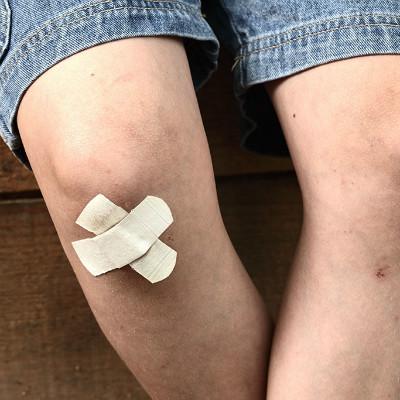Symptoms of early scleroderma
summary
Scleroderma is a kind of connective tissue disease characterized by inflammation, degeneration, thickening and fibrosis of the skin, and then sclerosis and atrophy. It can affect our normal life and cause multi system damage. In addition to degenerative lesions of skin, synovium and digital artery, the digestive tract, lung, heart and kidney can also be involved in systemic sclerosis. Now I'd like to introduce some pictures of the symptoms of early scleroderma.
Symptoms of early scleroderma
First, Raynaud's phenomenon patients in cold or nervous suddenly cold hands and feet, finger (toe) end color pale, and then purple. 10-15 minutes after the end of external stimulation, vasospasm recovered, and the color of finger (toe) end became normal, showing red or mottle. This change is called paroxysmal vasospasm (Raynaud phenomenon). Cold induced pallor can also appear at the tip of nose, tongue, lip and earlobe.
Second: in the early stage of the disease (edema stage), the skin shows mild redness and swelling. Some patients have erythema, pruritus and edema. The early stage of finger edema lasts for a long time. The skin changes stop at the distal end of the upper limb, and can also spread to the forearm, chest, abdomen, back and face. In diffuse scleroderma, the skin hardens extensively with deepening or decreasing pigmentation, making the skin look like salt and pepper. With the progress of the disease, the skin is tight and shiny, the normal wrinkles and skin folds disappear, and the facial skin is thin, rigid and expressionless. The lips are thin and tight, mouth opening is limited, systemic melanin appears at the same time, some cases even earlier. Patchy telangiectasia and subcutaneous calcification can occur in fingers, face, lips, tongue and forearm. Finger tip is the most common, ranging from small spots to large masses, covering the knee, elbow or other most prominent parts. Calcinosis and telangiectasia are more obvious in patients with CREST syndrome. When scleroderma progressed to the sclerosing stage, the skin became thicker, and the dry skin caused pruritus. At this stage, it developed progressively, lasting for 1-3 years or more. Finally, inflammation and fibrosis stopped, and entered the atrophic stage. The skin atrophied and thinned, and the fibrotic tissue was close to the subcutaneous tissue, which was not easy to be pinched by hand. The site of flexion contracture may appear bone ulcer, such as near the finger (toe) joint. In the later stage of atrophy, the skin of some parts gradually softens and can return to normal skin, especially the skin of the trunk and the proximal extremities.
Third: non specific musculoskeletal symptoms such as arthralgia and myalgia are the earliest manifestations of scleroderma. Sometimes there are obvious symptoms of arthritis, but the pain and stiffness of the joint is always more serious than the objective inflammatory indications. The patient's muscle atrophy is caused by disuse, which is the result of limited joint activity due to skin, joint and muscle bond involvement.
matters needing attention
The natural course of scleroderma varies greatly. Many patients' fingers are progressive sclerosis, flexion contracture and disability. Almost all patients eventually have visceral involvement. The patients with renal, heart and lung involvement in the early stage of the disease have poor prognosis. Pulmonary hypertension and intestinal malabsorption are common causes of death in patients with localized scleroderma.















